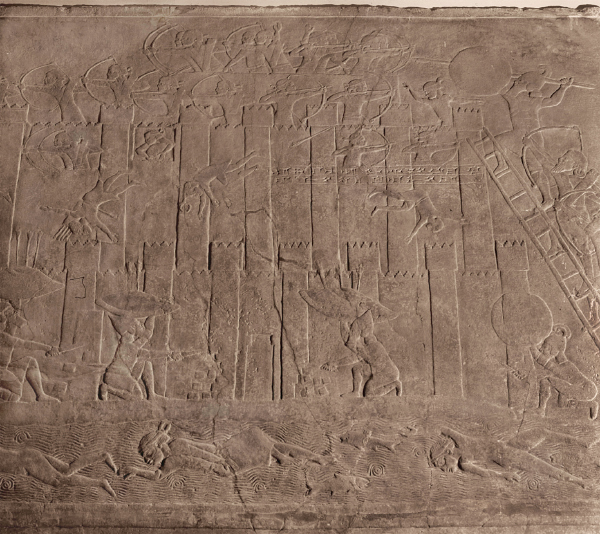Description of Yahweh’s Anger (2:1–9)
Footstool (2:1). In Assyrian sources the imagery of establishing a royal throne and footstool in a city-state represents the sovereign’s presence and authority.39 In Isaiah 66:1 the Sovereign’s footstool refers to the earth. In Psalm 99:5 it is used in parallel with the “holy hill.” In Psalm 132:7 it refers to the temple. In 1 Chronicles 28:2 it is used in parallel with the ark of the covenant. Ezekiel reports of the new temple, “He said: ‘Son of man, this is the place of my throne and the place for the soles of my feet. This is where I will live among the Israelites forever’ ” (Ezek. 43:7). In this Lamentations verse, Yahweh has withdrawn his presence.
Strongholds (2:2, 5). Excavations in the city of David, area G, uncovered a large, stepped-stone structure that created a platform for the citadel or stronghold of the thirteenth- to twelfth-century B.C. Jebusite city. In the tenth century this feature may well be the “stronghold of Zion,” which David captured and then developed for his palace (2 Sam. 5:7–9).40 During the eighth and seventh centuries B.C. the population of Jerusalem grew substantially, due in part to the Assyrian pressure on the northern kingdom of Israel. Uzziah (792–740 B.C.) and Joram (750–731 B.C.), his son and coregent, added to the city’s defenses (2 Chron. 26:9). Hezekiah (715–686 B.C.) further bolstered the city’s defenses and protected its water supply (2 Kings 20:20; 2 Chron. 32:5, 30; Isa. 22:8–11). Manasseh (686–642 B.C.) reinforced the city as well (2 Chron. 33:14).
Ruins of four significant structures from the period41 bear witness to a flourishing city (as well as to its destruction). The walled city had grown to 150 acres, seven and a half times greater than Lachish, the next largest fortified city in Judah. Remains of the solid city wall from this period measure twenty-two feet (seven meters) thick.42 Still more cities in Judah had been fortified (2 Chron. 4:38–41; Jer. 34:7). The temptation to trust in their own devices rather than Yahweh (Ps. 27:1) in the face of these pressures was soundly confronted by the prophets (e.g., Hos. 10:13b–14a).
Right hand (2:3–4). In the Hebrew culture the right hand could signify power to help or gain victory. “Your right hand, O LORD, was majestic in power. Your right hand, O LORD, shattered the enemy” (Ex. 15:5). “Sing to the LORD a new song, for he has done marvelous things; his right hand and his holy arm have worked salvation for him” (Ps. 98:1). What once signified help and safety now represented calamity.
His dwelling like a garden (2:6). This bit of ancient oriental poetry may seem obscure to the modern Western, predominantly urban reader. On the one hand a śukkâ (“dwelling”) is not a very substantial shelter (Jon. 4:5), but rather a hut intended for temporary cover (2 Sam. 11:11; Isa. 1:8). On the other hand, the first audience knew it also referred to the presence of Yahweh dwelling among them: “For in the day of trouble he will keep me safe in his dwelling;43 he will hide me in the shelter of his tabernacle and set me high upon a rock” (Ps. 27:5).
While Jeremiah’s compatriots were depending on the temple for their security (Jer. 7:1–7), Yahweh announces this object is devastated as easily as a garden shed. The same imagery is used in the early second millennium Lamentation over the Destruction of Ur: “My house founded by the righteous, Like a garden hut, verily on its side has caved in…. Like a tent, the house where the crops have been … to wind and rain have verily been exposed.”44
Rampart and wall (2:8). A rampart or outer wall (Heb. ḥēl) served to protect the main city wall (Heb. ḥômâ) from threat of battering rams and to impede a frontal assault. In some cases, the rampart may be nothing more than a mound raised to encircle the city. It may be faced with a stone glacis. The city wall itself provided a barrier from the enemy as well as a protected platform from which the city’s defenders could fire on the enemy.

Hezekiah broad wall
Kim Walton
